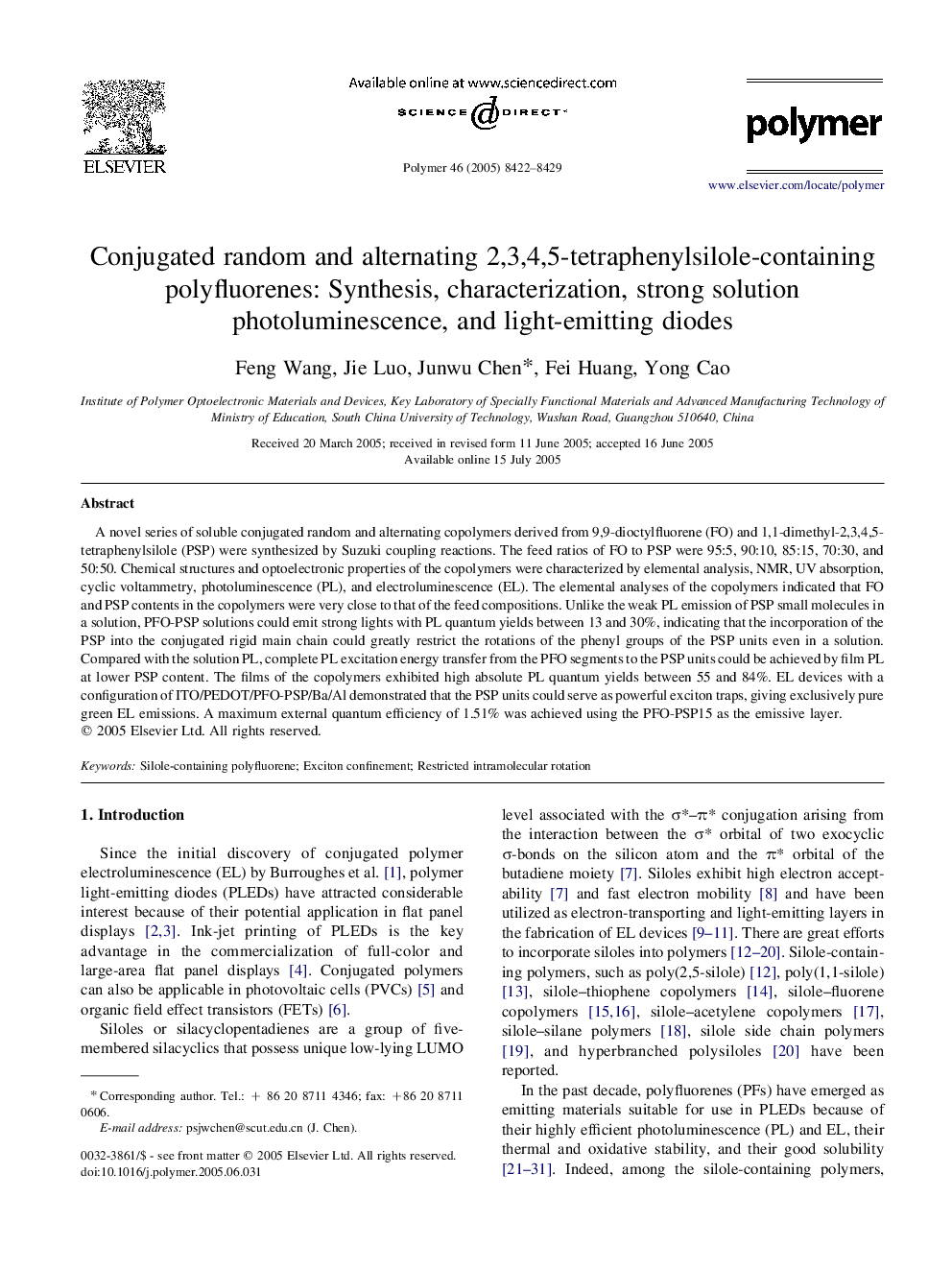| Article ID | Journal | Published Year | Pages | File Type |
|---|---|---|---|---|
| 5190772 | Polymer | 2005 | 8 Pages |
A novel series of soluble conjugated random and alternating copolymers derived from 9,9-dioctylfluorene (FO) and 1,1-dimethyl-2,3,4,5-tetraphenylsilole (PSP) were synthesized by Suzuki coupling reactions. The feed ratios of FO to PSP were 95:5, 90:10, 85:15, 70:30, and 50:50. Chemical structures and optoelectronic properties of the copolymers were characterized by elemental analysis, NMR, UV absorption, cyclic voltammetry, photoluminescence (PL), and electroluminescence (EL). The elemental analyses of the copolymers indicated that FO and PSP contents in the copolymers were very close to that of the feed compositions. Unlike the weak PL emission of PSP small molecules in a solution, PFO-PSP solutions could emit strong lights with PL quantum yields between 13 and 30%, indicating that the incorporation of the PSP into the conjugated rigid main chain could greatly restrict the rotations of the phenyl groups of the PSP units even in a solution. Compared with the solution PL, complete PL excitation energy transfer from the PFO segments to the PSP units could be achieved by film PL at lower PSP content. The films of the copolymers exhibited high absolute PL quantum yields between 55 and 84%. EL devices with a configuration of ITO/PEDOT/PFO-PSP/Ba/Al demonstrated that the PSP units could serve as powerful exciton traps, giving exclusively pure green EL emissions. A maximum external quantum efficiency of 1.51% was achieved using the PFO-PSP15 as the emissive layer.
